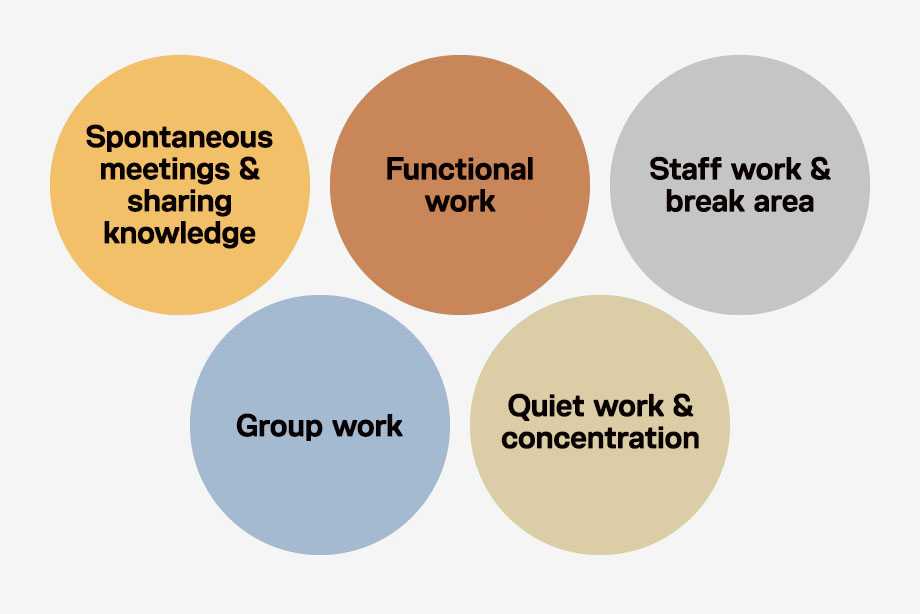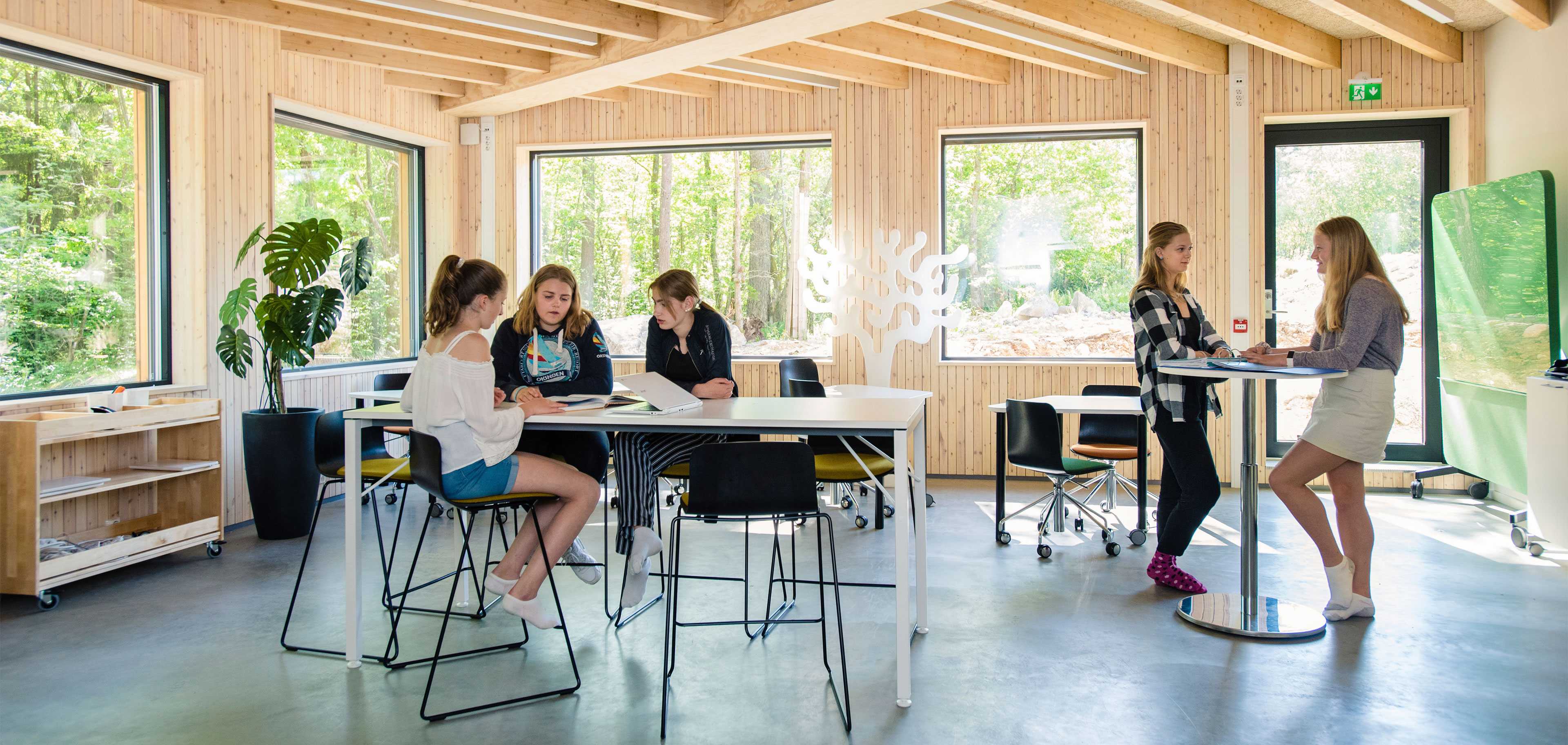How do we benefit from the experiences gained during the coronavirus pandemic in the schools of the future?
When coronavirus closed our schools, teachers and pupils had five days to get to grips with remote schooling. After a little uncertainty, it all started to go surprisingly well.
At home, many parents noticed how learning actually takes place in various situations. This got us thinking about pupils’ ergonomics at home – and in learning environments.
“I have an electrically adjustable desk and an exercise ball, but in the children’s room there is just an old stool and a desktop,” says Paula Viertola, Learning Environment Specialist at Martela, describing her own situation at home with a primary school pupil.
“I soon noticed how my child was able to independently find the best location for each exercise and activity. It would be good to have various places for different activities also at school,” says Viertola.
Activities that require concentration and listening are done in the bedroom and at the workstation. Whereas reading takes place on the sofa, bed, or a den, filled with comfy pillows, especially built for the purpose. My pupil always appears at the table when they want a discussion, company or the opportunity to think about something together.
Learning needs different types of spaces
Learning environments should offer clearly different types of spaces that have been created to support different ways of doing things and learning.
During the spring, protecting people from the virus was the top priority. Over the longer term, schools should take advantage of this successful experiment that was carried over this period.
Many pupils deeply missed the feeling of community and being with their teachers and friends. However, a survey on the events this spring, conducted by the INVEST Psychology and KiVa Programme research team at the University of Turku, clearly revealed the positive aspects of distance learning:
- More relaxed timetable
- Improved concentration
- Getting to grips with new learning styles and opportunities, such as searching for information and online learning
Digitalisation is changing not only working life but also learning spaces and methods at a speed that has never been seen before. This has also been taken into account in the core curriculum for basic education. Learning environments must be safe and inspire learning, and the special characteristics of different subjects must also be taken into account in the development of the environments.
A learning environment should also have a sufficient number of places that are suitable for work that requires concentration and for withdrawal. Furniture and spaces that encourage meetings, discussion and interaction are also needed.
Solution will not be found in the past
Martela has modelled the changes over three periods of time: the short, medium and long term.
Schools have been given clear instructions by the authorities for the short-term measures. These include reducing the number of users in each space and locating pupils at a safe distance from one another. The use of communal areas has also been restricted. Going forward, the situation could also be facilitated with, for example, floor screens between workstations or by placing a portable desk screen on the work surface.
Over the longer term, the pandemic will provide a window of opportunity to implement the targets of the curriculum, where teaching and learning arrangements are completely reconsidered. It is not a good idea to make any hasty decisions now or return to the era of individual desks and closed areas.
Now, we have the opportunity to look ahead and turn the school into a comprehensive learning environment that truly supports modern ways of teaching and learning. The learning facilities could also help pupils determine their strengths and opportunities in the future society.
The aim of modern learning environments is to introduce, alongside traditional forms of teaching, new, easy-to-modify spaces that promote the development of the pedagogical strategy and activities.

Keys to a new learning environment
With the summer holidays about to begin, it is a good time to stop and think about how well your own learning environment has supported the changes brought about by the situation. What parts of the lessons learned could be turned into practice over the longer term?
- What aspects of the spaces/furniture have turned into challenges? How well do the current spaces support adaptability and future working life skills?
- How easy is it to adapt the current learning environment?
- If the situation and distance learning continue after the summer, what improvements could be made to ensure successful working?
- How can we consider everyone's well-being, levels of activity during the day and opportunities to work in different positions?
- How can various teaching methods and utilisation of the different spaces at home depending on the situation also be considered in distance learning?
- How can user data and technology be used to create user-centric spaces?
When our requirements for facilities and the way in which they are used change rapidly, it is increasingly important to focus on user expectations.
“The collection of user experiences and the use of data in the design and development of facilities is sure to become even more important in our new situation. When users are given the chance to have an impact on facilities, it is easier for them to follow new rules and get used to the new facilities,” says Viertola.
Sirpa Vaarmala, Sales Director, Martela Corporation
+358 10 345 5225
sirpa.vaarmala@martela.com
